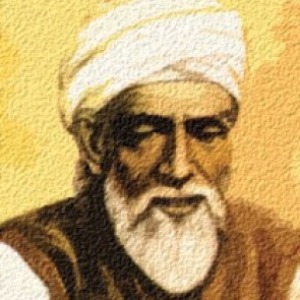
Scholar of
mathematics and astronomy, founder of trigonometry. (B.
10 June 940, Khorasan / Iran – D. 998, Baghdad) His full name is Ebu el-Vefa Muhammed b. Muhammed b. Yahya b.
İsmail b. el-Abbas el-Büzcanî and he was also known as “Engineer” and
“Calculator”. There is no further information about his life. He was born in
Buzcan town located between Herat and Nişabur (nowadays Türbet-i Câm). He
received his basic knowledge in the field of mathematics from his uncles Ebu
Amr el-Mugâzilî and Ebû Abdullah Muhammed b. Anbese. Later he went to Baghdad
and completed his education with recognized scholars of the period. He started
to give lectures and make researches in the fields of mathematics and astronomy
in Baghdad. He realized most of his observations here in the period of Büveyhî
ruler İzzüddevle Bahtiyar b. Muizzüddevle. He corresponded with Birûnî to
benefit from his opinions on this issue. Meanwhile they compared the
observation results of “birküs”
incident observed by Birûnî in Harizm and by Ebü’l-Vefâ in Baghdad. Birûnî
mentioned his observations in some of his works. It is known that Ebü’l-Vefâ
corresponded with his contemporary Ebu Ali el-Hubûbî and Hububî asked him some
formula to discover the space of triangles.
Starting from 959 until his death, Ebu’l Vefa was busy
with science in Baghdad. He received a basic education in the fields of
mathematics and astronomy and did studies on trigonometry primarily. He wrote
books in this field and analyzed Ptolemy’s and Diophantus’
works, explaining them. In the field of astronomy he worked on the movements of
the moon.
Ebu’l Vefa who has a distinct place in the history of
science thanks to his services in the fields of mathematics and astronomy
developed a wall octant to calculate the declinations of stars in an accurate
and correct way. Other than this, he developed advanced methods to make
calculations in trigonometric tables and invented new methods to solve some
problems in spherical trigonometry. He calculated value tables of sinus b and
tangent b with angle intervals of fifteen minutes for astronomic observations.
These proportions determined by Ebu’l Vefa who
presented the trigonometric relations between the six ground proportions of
trigonometry for the first time are still used nowadays. Besides he explained
the sinus theorem in spherical trigonometry.
Ebu’l Vefa followed important
mathematicians such as Habeş
el-Hasib and el-Mervezi, defining functions of tangent and
secant. Although Copernicus is known as the discoverer of secant, the famous
historian of science Monte Candon’s and Carra de Vaux’ researches proved that this
discovery belongs to Ebu’l Vefa.
Aside from trigonometry Ebu’l Vefa
also researched on the science of algebra at depth. He managed to solve 4th
degree equations which were unknown until that time. He could solve numerous
problems which could not be solved by ancient Greeks and Indians using
geometric methods.
A crater on the moon was named Abul Wafa after him. The famous historian of
science Plorian
Cajori said the
following things about him in his book titled “History of Mathematics”:
“Ebu’l Vefa without doubt
developed Harezmi's inventions in mathematics and
geometry. He especially focused on the relations of geometry and algebra. Thus
he managed to solve some algebraic equations using geometry. He established the
fundaments of differential calculations and analytic geometry. As it is known,
differential calculation is an important and a very useful topic invented by
the human intelligence and it is the basic source of modern scientific and
technologic developments. Besides he analyzed Battani’s works on trigonometry and explained the
complicated and ambiguous parts.”
Kitab ül Kâmil, which is accepted as
his most important work, is about trigonometry and astronomy. In the first chapter of the work
problems required to be known before the movement of stars are explained, in
the second chapter analysis of movements of stars and in the third chapter
things which make stars move.
WORKS:
Kitab'ül-Kamil (On trigonometry), Ez-Ziyc'üs Şamil (On
astronomy), Kitabü fi Amel-il-Mistarati
vel-Pergar vel-Gunye, Kitab ma Yahtacu İleyh-il-Küttab vel Ummal min
İlm-il-Hisab, Kitabun Fahirün bil Hisab, Kitabun fi ilmi
Hisab-il-musellesat-il-Küreviyye, Kitabun fil-Felek, Kitabun fil-Hendese, Kitab'ül-Medhal ila
Aritmetik, Tefsir-i-Harezmi fil Cebri vel-Mukabele.
REFERENCE: Hilmi Ziya Ülken / Türk Tefekkür Tarihi
(1933), S. N. Nasr / Kozmoloji Öğretilerine Giriş (1985, s. 84), Adnan Adıvar /
Bilim ve Din (1980, s. 80),Yeni Rehber Ansiklopedisi (2. bas. c. 6, s. 148-149,
1993), “Ebü’l-Vefâ’ Muhammed” (TDV İslâm
Ansiklopedisi (1994, c.10, s. 97), M. Şemsettin Günaltay / Ebü'l-Vefa
Bozcani'nin Türklüğü ve Hayatı Hakkında (tebliğ, Kayseri Zabıtları,
s. 299), İslam Ansiklopedisi - İslâm Âlemi Tarih,
Coğrafya, Etnografya ve Biyografya Lügati (c. 4, Eskişehir 2001), İhsan Işık / Ünlü
Bilim Adamları (Türkiye Ünlüleri Ansiklopedisi, C. 2, 2013) - Encyclopedia of
Turkey’s Famous People (2013).